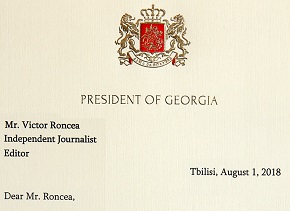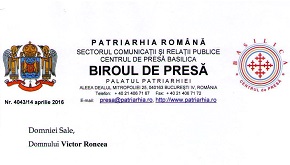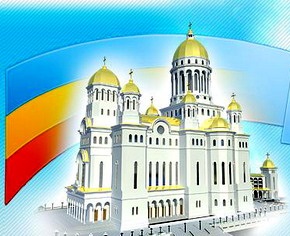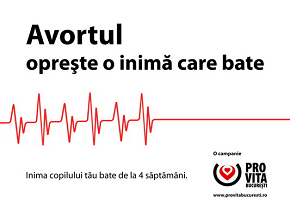Un raport de 182 de pagini editat sub egida Academiei Nationale de Stiinta a SUA, solicitat Consiliului National de Cercetare al SUA (US National Research Council) de catre CIA, Ministerul Securitatii Nationale al SUA (Department of Homeland Security) si Agentia de Proiecte pentru Cercetare Avansata in Aparare (Defense Advanced Research Projects Agency – DARPA) – inventatoarea Internetului – privind dezvoltarea tehnologiei de baza a “erei tehnotronice” conchide ca, pe langa “complexitatea incredibila” a sistemelor biometrice inrudite cu tehnica RFID, “recunoasterea biometrica” , inclusiv prin amprentare oculara, din ce in ce mai folosita de structurile mondiale de securitate, ramane de “natura probabilistica”, sub spectrul “inevitabil al incertitudinii si riscului erorilor” si “inerent supusa greselii”.
Lucrarea, intitulata “Recunoasterea Biometrica – Provocari si Oportunitati” si editata de Joseph N. Pato si Lynette I. Millett de la Whither Biometrics Committee al National Research Council, a fost data publicitatii pe 24 septembrie a.c. si este realizata atat pentru cercetatorii acestei stiinte anti-umane a controlului cat si pentru factorii de decizie si organismele guvernamentale din intreaga lume vrajite de potentialul totalitarist al biometriei, pusa in practica in numele “anti-terorismului”.
Mi-e greu sa cred ca in fata afacerii de miliarde si miliarde de euro – inclusiv in Romania (de la 1.10.2010 conducatorii auto sunt obligati sa foloseasca “roviniete biometrice” iar de la 1.01.2011 vom avea buletine cu cip biometric, in ciuda opozitiei organizatiilor civile si crestine) – profitorii sistemului vor mai da inapoi dupa concluziile oamenilor de stinta americani si avertismentele celor ingrijorati de efectele dictaturii biometrice in curs de instalare la nivel global. Dimpotriva, vor intensifica cercetarea pentru perfectionarea metodelor de control total. Pana atunci, chiar si o revista de profil cum este New Scientist, in ultimul sau numar, deja titreaza cu amuzament: “Orice poate fraieri scanerele biometrice“.
Poate tiganii, care subzista fara acte cu milioanele si sunt pusi acum la “amprentat biomtetric” in Franta, vor fi cei care ne vor ajuta sa “fraierim” sistemele biometrice pentru a nu deveni sclavi inregistrati ca vitele pe o plantatie mondiala. Parcurgand Raportul mi-a venit automat in minte scena fabuloasa din “Brazil” – transpunerea cartii lui Orwell “1984” (Video mai sus) – in care o musca nimerita in masina de scris provoaca o reactie in lant in Ministerul Informatiilor si Securitatii, nefasta pentru un biet individ (vezi Video mai jos). Cam asa e si cu biometria.
Prezint mai jos descrierea oficiala si originala a lucrarii, urmata de RAPORTUL INTEGRAL, disponibil pentru citit si difuzat electronic sau pentru descarcat in format PDF:
Biometric recognition–the automated recognition of individuals based on their behavioral and biological characteristic–is promoted as a way to help identify terrorists, provide better control of access to physical facilities and financial accounts, and increase the efficiency of access to services and their utilization. Biometric recognition has been applied to identification of criminals, patient tracking in medical informatics, and the personalization of social services, among other things. In spite of substantial effort, however, there remain unresolved questions about the effectiveness and management of systems for biometric recognition, as well as the appropriateness and societal impact of their use. Moreover, the general public has been exposed to biometrics largely as high-technology gadgets in spy thrillers or as fear-instilling instruments of state or corporate surveillance in speculative fiction.
Now, as biometric technologies appear poised for broader use, increased concerns about national security and the tracking of individuals as they cross borders have caused passports, visas, and border-crossing records to be linked to biometric data. A focus on fighting insurgencies and terrorism has led to the military deployment of biometric tools to enable recognition of individuals as friend or foe. Commercially, finger-imaging sensors, whose cost and physical size have been reduced, now appear on many laptop personal computers, handheld devices, mobile phones, and other consumer devices.
Biometric Recognition: Challenges and Opportunities addresses the issues surrounding broader implementation of this technology, making two main points: first, biometric recognition systems are incredibly complex, and need to be addressed as such. Second, biometric recognition is an inherently probabilistic endeavor. Consequently, even when the technology and the system in which it is embedded are behaving as designed, there is inevitable uncertainty and risk of error. This book elaborates on these themes in detail to provide policy makers, developers, and researchers a comprehensive assessment of biometric recognition that examines current capabilities, future possibilities, and the role of government in technology and system development.
Vezi si:

 October 3rd, 2010
October 3rd, 2010  VR
VR 

 Posted in
Posted in  Tags:
Tags: 





































Thanks for the points you have contributed here. Something important
I would like to convey is that pc memory specifications generally increase along
with other developments in the technologies. For instance, when new generations of
processor chips are brought to the market, there is certainly usually a similar increase in the
size calls for of all laptop or computer memory along with hard drive space.
This is because the application operated through these processor chips will inevitably increase
in power to benefit from the new technological innovation.